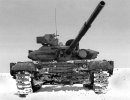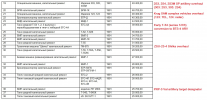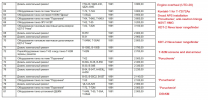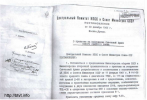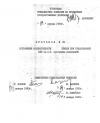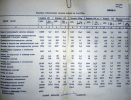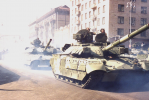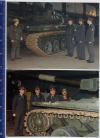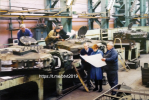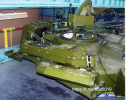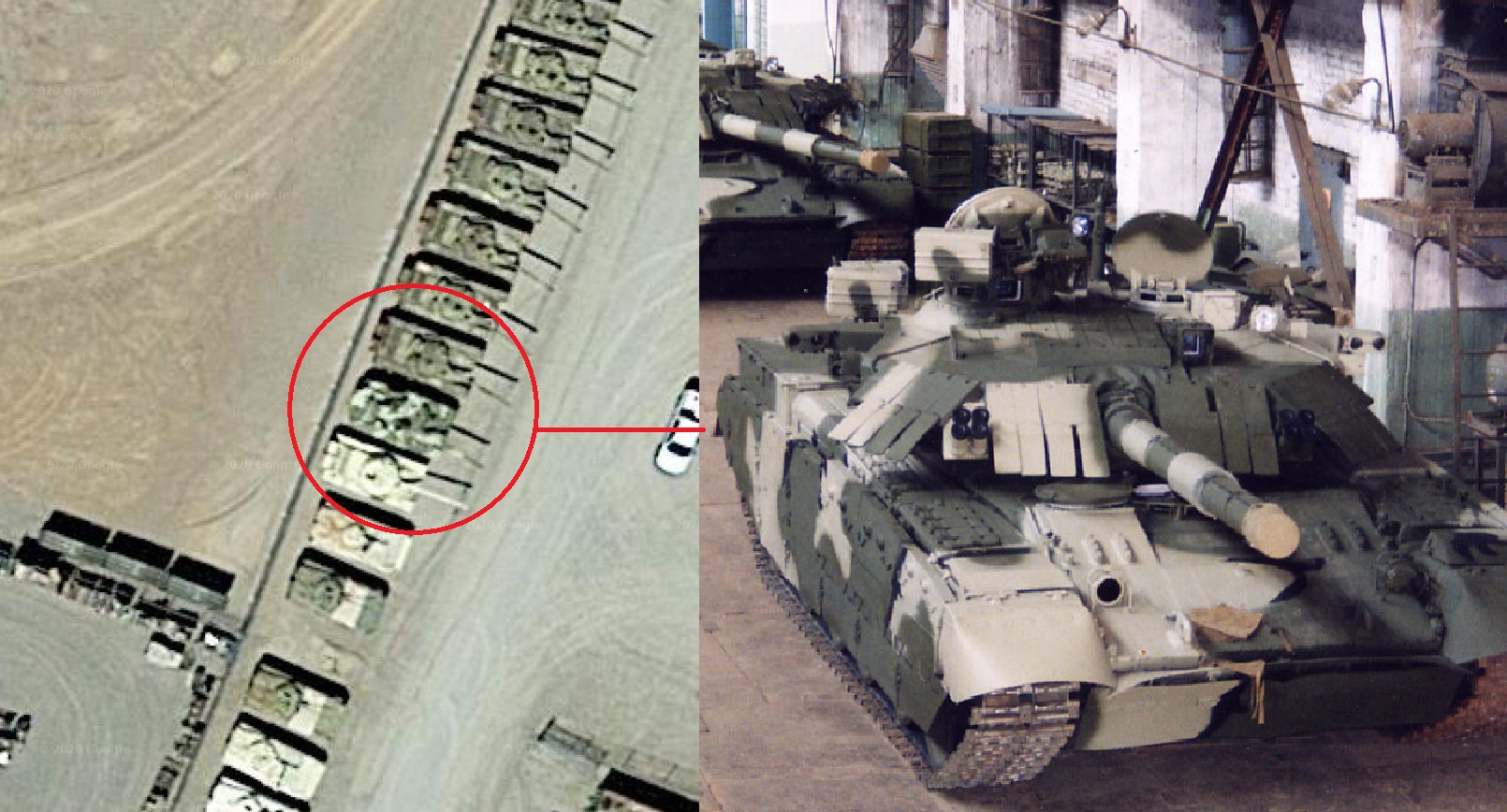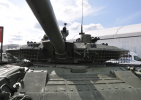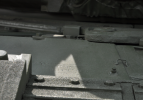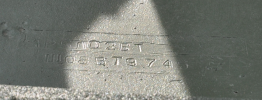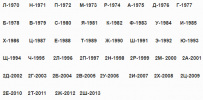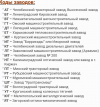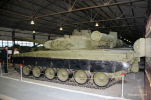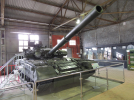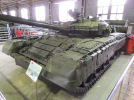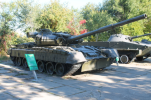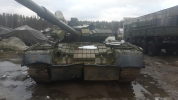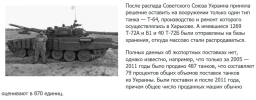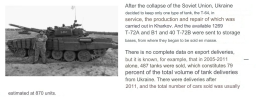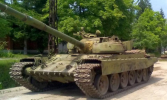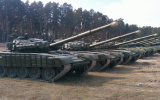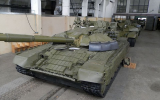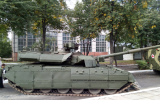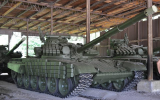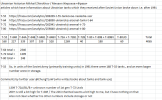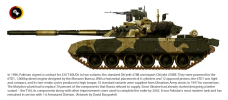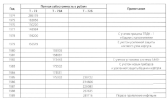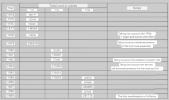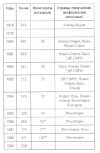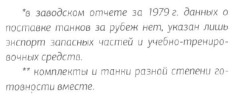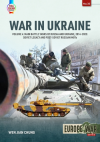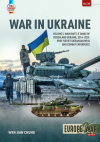Antares
Respected Leader
Tässäpä mielenkiintoinen asia joka tuli vastaan melkein vahingossa. Julkaisin aikaisemmin tässä ketjussa kolmen merkittävän venäläisen lähdeteoksen taulukot, nämä kolme kirjaa löytyvät tästä viestistä: LINKKI
Kirjat ovat nimeltään:
Отечественные бронированные машины. ХХ век. 1905-1941 - А.Г. Солянкин, М.В. Павлов, И.В. Павлов, И.Г. Желтов - 2002
Domestic armored vehicles. XX century. 1905-1941 - Solyankin A.G., Pavlov M.V., Pavlov I.V., Zheltov I.G. - 2002
-
Отечественные бронированные машины. XX век. Том 2. 1941-1945 - А.Г. Солянкин, М.В. Павлов, И.В. Павлов, И.Г. Желтов - 2005
Domestic armored vehicles. XX century. Volume 2. 1941-1945 - Solyankin A.G., Pavlov M.V., Pavlov I.V., Zheltov I.G. - 2005
-
Отечественные Бронированные Машины ХХ век Том 3: 1946-1965 - А.Г. Солянкин, И.Г. Желтов, К.Н. Кудряшов - 2010
Domestic armored vehicles. XX century. Volume 3. 1946-1965 - Solyankin A.G., Zheltov I.G., Kudryashov K.N. - 2010
-
Jos on tarkkana, huomaa että kolmannen teoksen kirjoittajista puuttuvat Pavlov M.V. ja Pavlov I.V. jotka ovat veljeksiä. En tiedä tarkempia yksityiskohtia, mutta muistan kuulleeni että kirjoittajaryhmä "hajosi" ennen kuin kolmas kirja saatiin valmiiksi.
Neljäs kirja, joka oli tarkoitus käsitellä aikaväli 1966-2000 puolestaan törmäsi vaikeuksiin - tai näin ainakin väitetään / spekuloidaan eri venäjänkielisillä sivuilla. Yhdeksi syyksi on sanottu sitä että kyseinen ajanjakso sisältää paljon salaiseksi luokiteltua materiaalia. Muistan lukeneeni että jossain vaiheessa jokin osa tästä porukasta harkitsi aikaväliä 1966-1985 mutta siitäkin on jo vuosia aikaa. Ilmeisesti ei johtanut mihinkään tai jos johti, niin ei ainakaan kirjan julkaisuun.
-
MUTTA tässä se mikä on mennyt minulta aikaisemmin ohitse: vuonna 2021 Pavlovin veljekset julkaisivat uuden kirjan ja se käsittelee aikaväliä 1945-1965: LÄHDE
Павлов М. В., Павлов И. В. "Отечественные бронированные машины 1945-1965 гг. Часть I. Легкие, средние и тяжелые танки" - 2021
Pavlov M.V., Pavlov I.V. “Domestic armored vehicles 1945-1965.” Part I. Light, medium and heavy tanks" - 2021
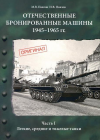
Minulla ei ole pääsyä tähän kirjaan ja Alexey Khlopotovin blogikirjoituksen mukaan kirjan painos oli 1 000 kpl joista 500 kpl meni UVZ:n sisäiseen käyttöön ja loput 500 kpl myyntiin. Oletan että kauppa kävi nopeasti ja toista painosta ei oteta, joten kirjan löytäminen käynee vaikeaksi tai kalliiksi. Venäläinen kirja kun on kyseessä, niin yleensä ennemmin tai myöhemmin näistä ilmestyy jonkinlainen digitaalinen versio internettiin - joko skannattu tai valokuvattu.
Jos vertaa Solyankin et al. kirjaan niin siinä on 670 sivua kun taas Pavlovin veljesten kirjassa on 1 112 sivua. Lisäksi Pavlovin veljesten kirjasta on julkaistu vasta ensimmäinen osa, joka käsittelee pelkästään panssarivaunuja aikavälillä 1946-1965. Toinen osa, jota he työstävät parhaillaan käsittelee Khlopotovin mukaan "muita panssaroituja ajoneuvoja".
Kuten tästä voi päätellä, Pavlovin veljesten kirjat tulevat olemaan sisällön määrän osalta selvästi Solyankin et al. kirjaa laajempia, mutta sillä ei välttämättä ole tämän ketjun kannalta suurta merkitystä. Tässä ketjussa on pyritty keskittymään tuotantomääriin ja oletan että Solyankin et al. kirjasta löytyvä taulukko sisältää tarkan datan eikä Pavlovin veljesten kirjassa ole siihen lisättävää - olettaen että eivät ole löytäneet jotain korjattavaa.
Neuvostoliiton kylmän sodan aikaisen panssarivaunujen tuotannon osalta heidän kirjansa on kuitenkin erinomaiselta kuulostava, ainakin sen perusteella mitä olen lukenut arvosteluja. Tämän kirjasarjan aikaisemmat kirjat ovat parhaat lähdeteokset tästä aiheesta ja oletan että tämä olisi erinomainen lisä niiden kaveriksi.
Tämä löytö yleensäkin herätti pienen pienen toivonkipinän siitä että kenties jossain vaiheessa saataisiin vastaava teos myös vuoden 1965 jälkeiselle ajalle. Aikaväli 1966-2000 olisi erinomainen koska se käsittelisi paitsi Neuvostoliiton viimeiset vuosikymmenet niin myös Venäjän ensimmäiset vuodet. Jos heillä olisi yhtä avoin pääsy arkistoihin kuin kolmen ensimmäisen kirjan osalta, silloin saataisiin vihdoin vastaus moneen avoimeen kysymykseen eri panssarivaunujen vuosituotantomääristä ja erityisesti eri varianttien osalta.
Ymmärrettävistä syistä nämä asiat ovat vielä nykyäänkin Venäjällä suuria salaisuuksia, koska erityisesti 1980-luvulla valmistetut panssarivaunut ovat heillä edelleen aktiivijoukkojen käytössä. 1990-luku puolestaan nähdään syvän häpeän aikana, jolloin panssarivaunujen tuotanto sukelsi syvälle. Epäilemättä siinä on yksi syy salailulle.
Niin tai näin, tämä Pavlovin veljesten tuore / pari vuotta sitten tapahtunut uuden kirjan julkaisu on mennyt minulta ohitse ja olen siitä iloinen, vaikkei minulla olekaan kyseistä kirjaa käsissä. Kenties sitten jossain vaiheessa JA kenties näiden kirjojen valmistumisen jälkeen he suuntaavat katseen vuoden 1965 jälkeisiin vuosiin? Toivottavasti.
Kirjat ovat nimeltään:
Отечественные бронированные машины. ХХ век. 1905-1941 - А.Г. Солянкин, М.В. Павлов, И.В. Павлов, И.Г. Желтов - 2002
Domestic armored vehicles. XX century. 1905-1941 - Solyankin A.G., Pavlov M.V., Pavlov I.V., Zheltov I.G. - 2002
-
Отечественные бронированные машины. XX век. Том 2. 1941-1945 - А.Г. Солянкин, М.В. Павлов, И.В. Павлов, И.Г. Желтов - 2005
Domestic armored vehicles. XX century. Volume 2. 1941-1945 - Solyankin A.G., Pavlov M.V., Pavlov I.V., Zheltov I.G. - 2005
-
Отечественные Бронированные Машины ХХ век Том 3: 1946-1965 - А.Г. Солянкин, И.Г. Желтов, К.Н. Кудряшов - 2010
Domestic armored vehicles. XX century. Volume 3. 1946-1965 - Solyankin A.G., Zheltov I.G., Kudryashov K.N. - 2010
-
Jos on tarkkana, huomaa että kolmannen teoksen kirjoittajista puuttuvat Pavlov M.V. ja Pavlov I.V. jotka ovat veljeksiä. En tiedä tarkempia yksityiskohtia, mutta muistan kuulleeni että kirjoittajaryhmä "hajosi" ennen kuin kolmas kirja saatiin valmiiksi.
Neljäs kirja, joka oli tarkoitus käsitellä aikaväli 1966-2000 puolestaan törmäsi vaikeuksiin - tai näin ainakin väitetään / spekuloidaan eri venäjänkielisillä sivuilla. Yhdeksi syyksi on sanottu sitä että kyseinen ajanjakso sisältää paljon salaiseksi luokiteltua materiaalia. Muistan lukeneeni että jossain vaiheessa jokin osa tästä porukasta harkitsi aikaväliä 1966-1985 mutta siitäkin on jo vuosia aikaa. Ilmeisesti ei johtanut mihinkään tai jos johti, niin ei ainakaan kirjan julkaisuun.
-
MUTTA tässä se mikä on mennyt minulta aikaisemmin ohitse: vuonna 2021 Pavlovin veljekset julkaisivat uuden kirjan ja se käsittelee aikaväliä 1945-1965: LÄHDE
Павлов М. В., Павлов И. В. "Отечественные бронированные машины 1945-1965 гг. Часть I. Легкие, средние и тяжелые танки" - 2021
Pavlov M.V., Pavlov I.V. “Domestic armored vehicles 1945-1965.” Part I. Light, medium and heavy tanks" - 2021

Minulla ei ole pääsyä tähän kirjaan ja Alexey Khlopotovin blogikirjoituksen mukaan kirjan painos oli 1 000 kpl joista 500 kpl meni UVZ:n sisäiseen käyttöön ja loput 500 kpl myyntiin. Oletan että kauppa kävi nopeasti ja toista painosta ei oteta, joten kirjan löytäminen käynee vaikeaksi tai kalliiksi. Venäläinen kirja kun on kyseessä, niin yleensä ennemmin tai myöhemmin näistä ilmestyy jonkinlainen digitaalinen versio internettiin - joko skannattu tai valokuvattu.
Jos vertaa Solyankin et al. kirjaan niin siinä on 670 sivua kun taas Pavlovin veljesten kirjassa on 1 112 sivua. Lisäksi Pavlovin veljesten kirjasta on julkaistu vasta ensimmäinen osa, joka käsittelee pelkästään panssarivaunuja aikavälillä 1946-1965. Toinen osa, jota he työstävät parhaillaan käsittelee Khlopotovin mukaan "muita panssaroituja ajoneuvoja".
Kuten tästä voi päätellä, Pavlovin veljesten kirjat tulevat olemaan sisällön määrän osalta selvästi Solyankin et al. kirjaa laajempia, mutta sillä ei välttämättä ole tämän ketjun kannalta suurta merkitystä. Tässä ketjussa on pyritty keskittymään tuotantomääriin ja oletan että Solyankin et al. kirjasta löytyvä taulukko sisältää tarkan datan eikä Pavlovin veljesten kirjassa ole siihen lisättävää - olettaen että eivät ole löytäneet jotain korjattavaa.
Neuvostoliiton kylmän sodan aikaisen panssarivaunujen tuotannon osalta heidän kirjansa on kuitenkin erinomaiselta kuulostava, ainakin sen perusteella mitä olen lukenut arvosteluja. Tämän kirjasarjan aikaisemmat kirjat ovat parhaat lähdeteokset tästä aiheesta ja oletan että tämä olisi erinomainen lisä niiden kaveriksi.
Tämä löytö yleensäkin herätti pienen pienen toivonkipinän siitä että kenties jossain vaiheessa saataisiin vastaava teos myös vuoden 1965 jälkeiselle ajalle. Aikaväli 1966-2000 olisi erinomainen koska se käsittelisi paitsi Neuvostoliiton viimeiset vuosikymmenet niin myös Venäjän ensimmäiset vuodet. Jos heillä olisi yhtä avoin pääsy arkistoihin kuin kolmen ensimmäisen kirjan osalta, silloin saataisiin vihdoin vastaus moneen avoimeen kysymykseen eri panssarivaunujen vuosituotantomääristä ja erityisesti eri varianttien osalta.
Ymmärrettävistä syistä nämä asiat ovat vielä nykyäänkin Venäjällä suuria salaisuuksia, koska erityisesti 1980-luvulla valmistetut panssarivaunut ovat heillä edelleen aktiivijoukkojen käytössä. 1990-luku puolestaan nähdään syvän häpeän aikana, jolloin panssarivaunujen tuotanto sukelsi syvälle. Epäilemättä siinä on yksi syy salailulle.
Niin tai näin, tämä Pavlovin veljesten tuore / pari vuotta sitten tapahtunut uuden kirjan julkaisu on mennyt minulta ohitse ja olen siitä iloinen, vaikkei minulla olekaan kyseistä kirjaa käsissä. Kenties sitten jossain vaiheessa JA kenties näiden kirjojen valmistumisen jälkeen he suuntaavat katseen vuoden 1965 jälkeisiin vuosiin? Toivottavasti.

